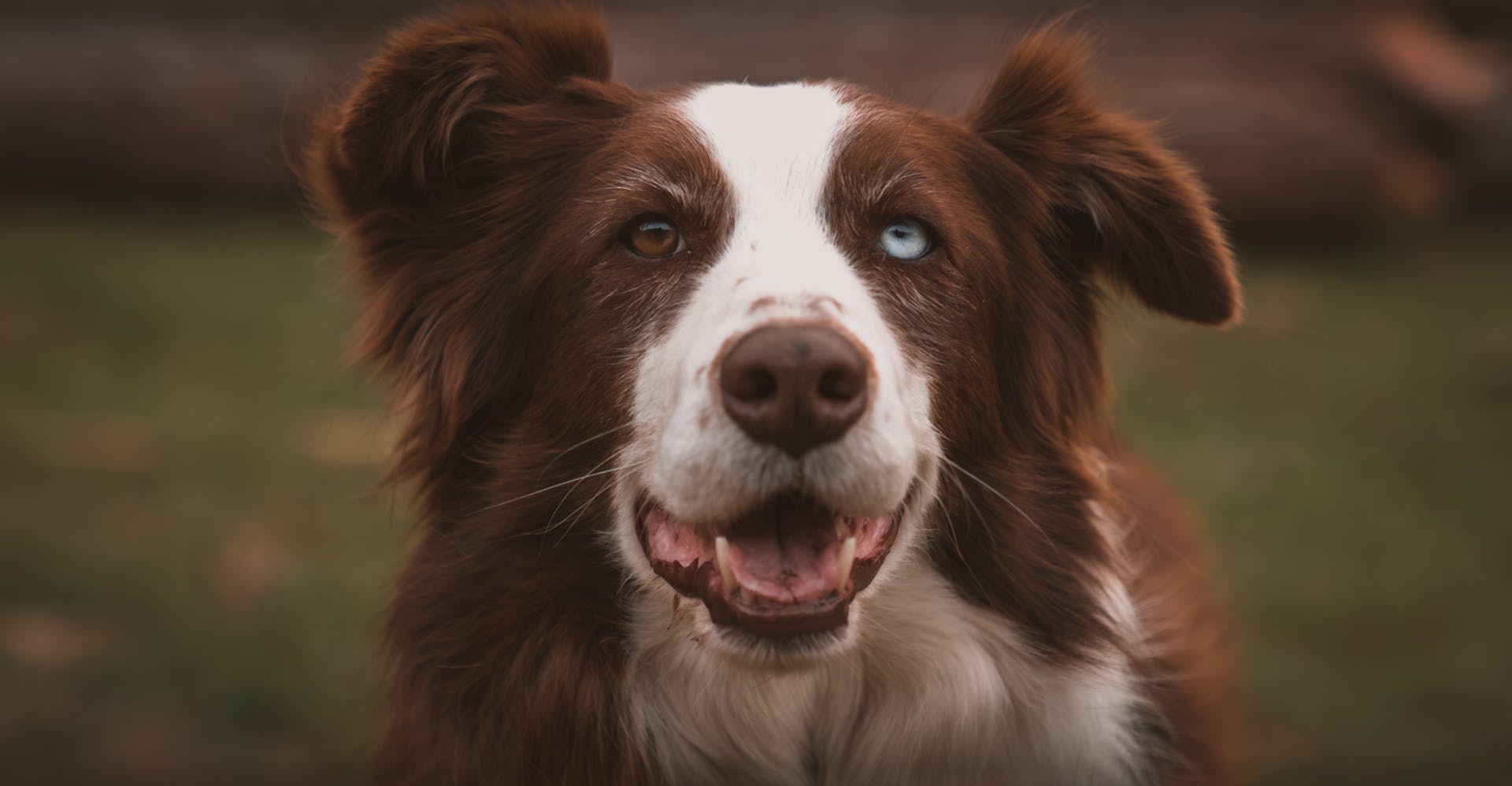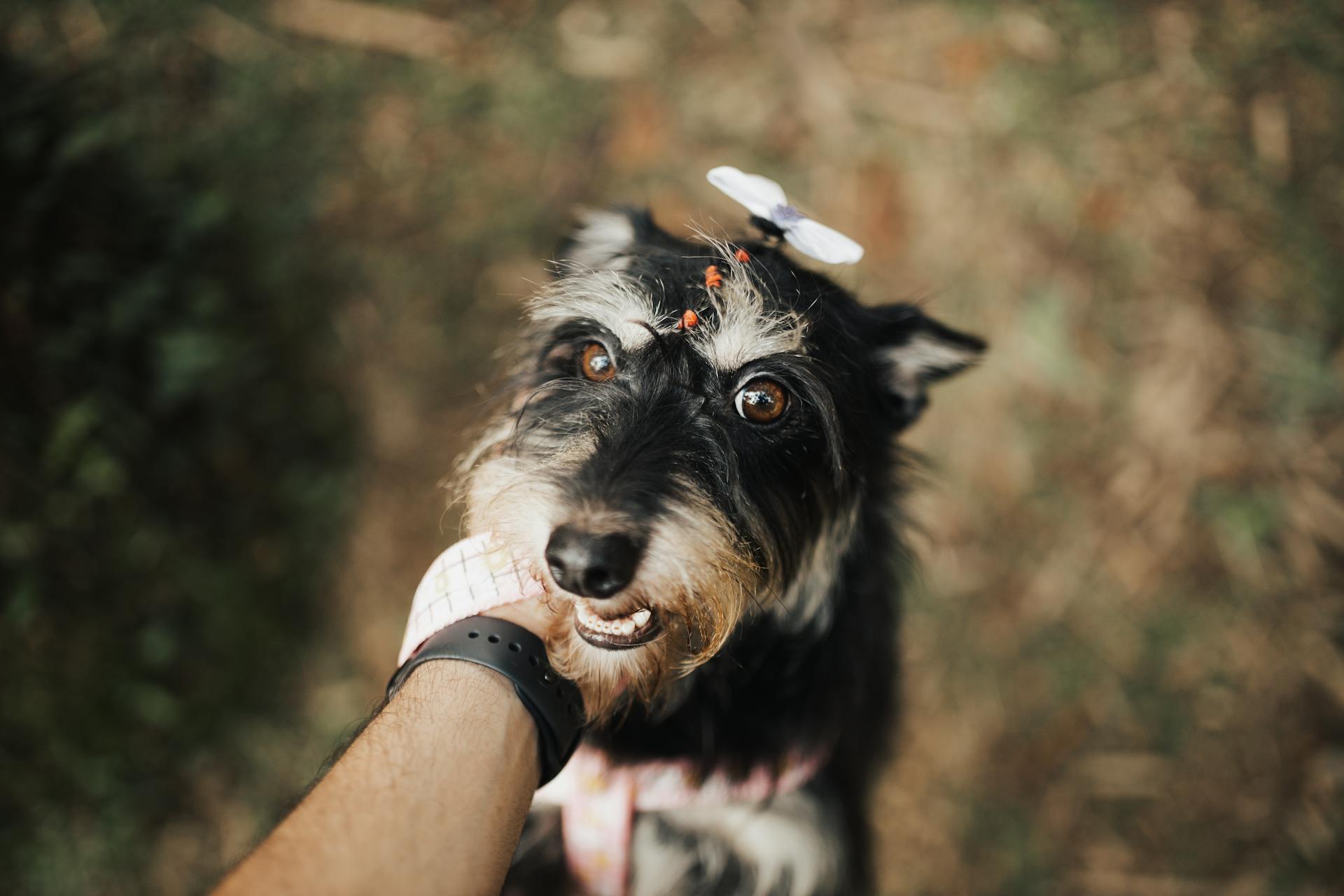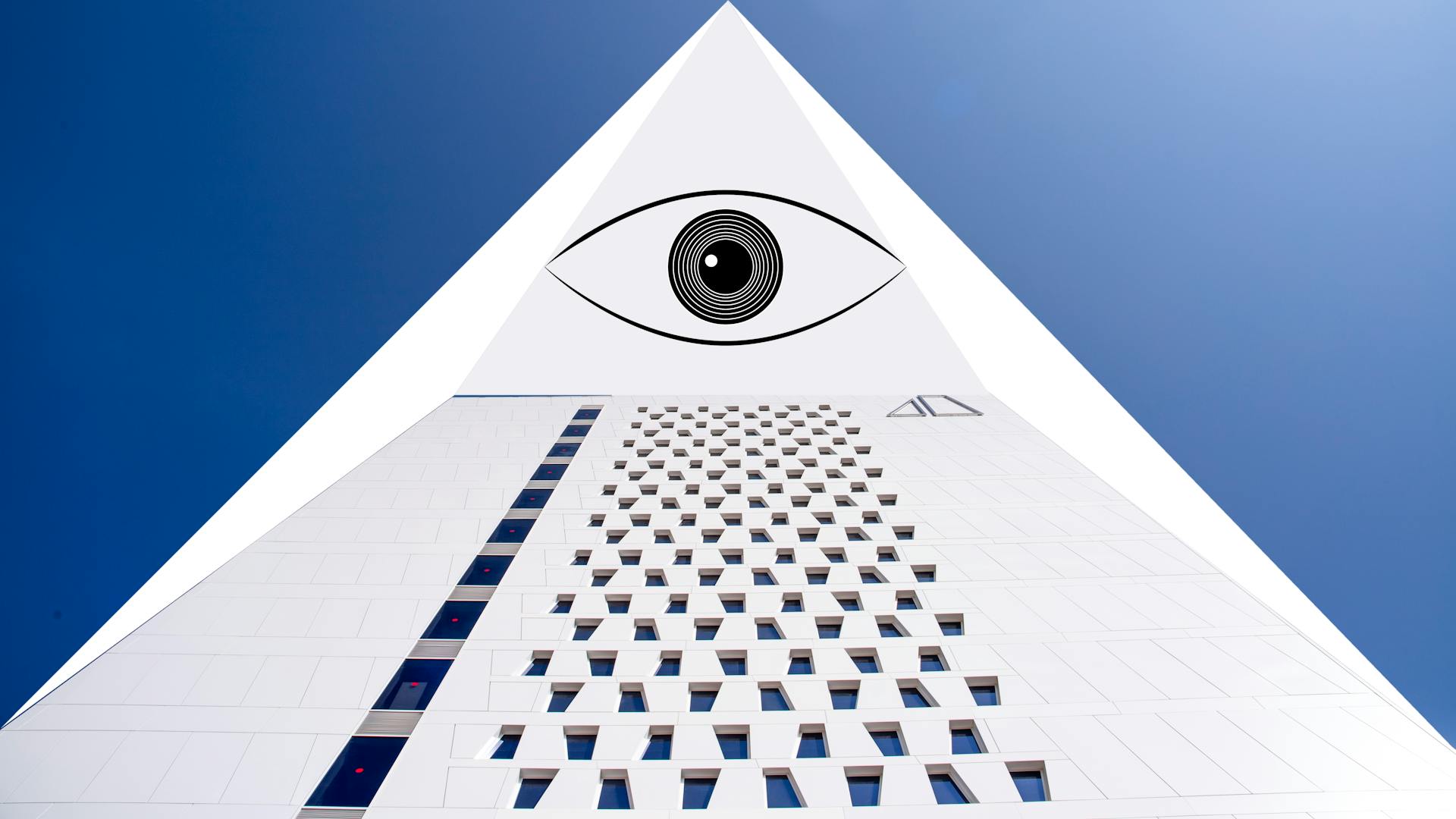
Shih Tzus are prone to eye problems due to their brachycephalic skull structure, which can cause their eyes to be more susceptible to injury and strain.
Proper eye care is essential for Shih Tzus, as they can be prone to conditions such as proptosis, where the eye bulges out of the socket.
Shih Tzus are also at risk for eye problems like entropion, where the eyelid rolls inward and irritates the eye.
Their large eyes make them more prone to eye injuries, such as corneal ulcers, which can be painful and potentially lead to vision loss if left untreated.
Causes and Types of Shih Tzu Eye Problems
Shih Tzus are prone to eye problems due to their anatomy, with large eyes and shallow eye sockets making them more susceptible to infections and injuries.
Eye infections are a common issue in Shih Tzus, often caused by foreign materials entering the area under their eyes, leading to inflammation and infection.
The shallow eye sockets of Shih Tzus make them more prone to eye problems, as foreign materials can easily enter the area and cause issues.
Good eye care can help prevent some eye problems, but many have genetic origins and can't be avoided.
Shih Tzus are a brachycephalic breed, meaning they have a short head shape, which contributes to their eye problems due to the shallow eye sockets.
Their prominent eyes make them more easily injured than other dog breeds, and their unique anatomy limits the protection their eyes have.
Common Shih Tzu Eye Issues
Progressive retinal atrophy (PRA) is a serious condition that affects Shih Tzus, leading to blindness. It's a genetic disorder that can develop as early as 2 years of age, initially affecting night vision before progressing to complete blindness.
There are several types of PRA, including early onset slow progression, early onset rapid progression, late onset, and Sudden acquired retinal degeneration. The Shih Tzu breed is more likely to be affected by the late onset type.
If your Shih Tzu is diagnosed with PRA, there is no cure, but genetic testing can be done to identify breeding stock that are free of the disease.
The 5 Most Common
Progressive retinal atrophy (PRA) is a serious condition that affects many Shih Tzus, leading to blindness. It's a genetic disorder that can develop as early as 2 years of age.
PRA initially affects a dog's night vision, which can progress to complete blindness. This condition is recognized in 86 different breeds and can be slow to develop, making it difficult to spot warning signs.
The Shih Tzu breed is more likely to be affected by the late onset type of PRA, which can start showing symptoms between 2 and 5 years of age. Symptoms typically start with night blindness and progress to peripheral vision loss and then blindness.
Genetic testing is available to identify PRA in breeding stock, and it's essential to perform these tests to certify and register dogs as being free of the condition. This can help reduce the risk of passing on the gene to future generations.
Dilated pupils, cataracts, and abnormally reflective eyes are common signs of PRA in Shih Tzus. These symptoms can be subtle, but they're essential to watch out for to ensure your dog receives proper care and attention.
Explore further: Shih Tzu Old Age Problems
Distichiasis
Distichiasis is a condition where extra eyelashes grow out of the base of the meibomian gland, an oil gland on the eyelid margin, and rub against the surface of the eye.
This can cause tearing, redness of the conjunctiva, and inflammation and possible ulceration of the cornea if left untreated.
Distichiasis is seen in many breeds, particularly long-haired breeds, but it can occur in any dog, including Shih Tzus.
In Shih Tzus, Distichiasis occurs with reasonable frequency, and the hereditary basis has not been established, although it seems probable due to the high incidence in some breeds.
Clinical signs of Distichiasis include tearing, redness of the conjunctiva, and inflammation and possible ulceration of the cornea.
If left untreated, the constant rubbing on the eye can lead to cornea ulcers.
Treatment typically involves a veterinarian removing the problem eyelashes and destroying the roots so they don't grow back.
Cryotherapy or chemical freezing, or electrolysis is used in this procedure, usually performed by a specialist (veterinary ophthalmologist).
If the eyelashes are just plucked out, they will grow back, so this is not a recommended treatment method.
On a similar theme: Shih Tzu Back Problems
Cataracts and Age-Related Issues
Cataracts are a common eye problem in older Shih Tzus, typically starting to occur around 7-8 years old.
As dogs age, some cloudiness is normal, but cataracts are a serious condition that can lead to total blindness if left untreated.
Cataracts are usually caused by genetics, but can also develop as a result of the natural aging process and certain eye diseases.
Symptoms of cataracts may not be noticeable at first, but can include a discoloration on the dog's pupils or signs of visual problems.
Cataracts can be removed surgically, and the surgeries are usually successful, although the dog may experience a slight reduction in vision.
Nuclear sclerosis, a condition that causes the lens to appear cloudy, is a normal aging change that doesn't significantly diminish a dog's vision, but can be a precursor to cataracts.
Cataracts in Older Adults
Cataracts are a common eye problem that affects older adults, including Shih Tzus. They're essentially a cloudiness that affects the eye lens, causing vision problems.
Symptoms of cataracts can be subtle, and you might not notice any issues at first. However, as the condition progresses, you may notice a discoloration on your dog's pupils or signs of visual problems.
Cataracts are mainly hereditary, but they can also be associated with old age, other retinal diseases, diabetes, and trauma. Unfortunately, the way cataracts are passed from generation to generation in Shih Tzus hasn't been established.
A veterinarian can diagnose cataracts by using an ophthalmoscope, which makes them visible. Cataracts can be treated with surgery, which is usually successful.
Cataracts can be recognized due to the milky white or blue-gray color of the eye or eyes. It's essential to differentiate between cataracts and a condition called lenticular esclerosis, which is a normal aging change that doesn't affect your dog's sight.
Cataracts can be treated with surgery, but unfortunately, you can't prevent them. However, you may be able to slow their progression with a good healthy diet and avoidance of toxins.
In Shih Tzus, cataracts typically start occurring as the dog reaches 7-8 years old. They're a genetic condition, and while it might be possible to slow its development, it's currently not possible to prevent it from occurring in the first place.
Nuclear sclerosis is a change in the lens of the eye that normally occurs with aging, and it doesn't significantly diminish your dog's vision. It tends to affect both eyes at the same time and can be confused with cataracts.
Discover more: Old Shih Tzu
At What Age Do People Go Blind?
Unfortunately, there's no specific age for people to go blind, just like Shih Tzus. Blindness can occur at any age due to various eye problems, some of which can be treated if caught early, but others don't have a cure and can result in permanent blindness.
Some conditions progress slowly as we age, similar to Progressive Retinal Atrophy (PRA) in Shih Tzus, where vision loss is a gradual process. This means that people may not notice a significant decline in their vision until they're much older.
Eye Infections and Disorders
Eye infections are a common issue for Shih Tzus, caused by viruses, bacteria, fungi, and parasites, as well as scratches on the cornea, irritants, or foreign bodies. If left untreated, eye infections can lead to vision loss.
Redness, swelling, smelly discharge, squinting, excessive blinking, refusal to open the eye, light sensitivity, and pawing at the eye are all symptoms of eye infections. It's crucial to get the correct diagnosis to ensure proper treatment.
Eye infections can be caused by a build-up of glandular secretions on the fur below a Shih Tzu's eyes, which attracts dirt and bacteria, leading to an infection. Cleaning the area frequently can significantly reduce the number of eye infections, but Shih Tzus are still more likely to experience eye infections compared to other breeds.
Here are some common types of eye infections in Shih Tzus:
- Pink eye: a common type of infection seen in this breed
- Corneal ulcers: caused by trauma or contact with irritants
If you suspect your Shih Tzu has an eye infection, contact your vet for proper diagnosis and treatment.
Exposure Keratopathy Syndrome
Exposure Keratopathy Syndrome is a common issue in brachycephalic breeds like Shih Tzus, Pugs, Pekingese, and Lhasa Apsos.
These breeds have a flattened face and large eyes, making them prone to chronic discomfort and abrasions on the cornea due to constant exposure and lack of protection.
Symptoms of Exposure Keratopathy Syndrome include redness around the eyes, increased tears, and discomfort, which can sometimes lead to eye injuries.
Chronic irritation can change the cornea and even cause decreased vision.
Treatment for Exposure Keratopathy Syndrome may involve artificial tears and surgery to reduce the eyelid opening.
Corneal Ulcers
Corneal ulcers are a painful and potentially serious condition that can affect Shih Tzus. They occur when the cornea, the clear shiny membrane protecting the eye, ruptures and the eye's fluids leak out.
Corneal ulcers are often caused by trauma, such as a scratch or puncture, or by contact with irritants like shampoo or chemicals. They can also be caused by eye infections, which can lead to further complications.
If your Shih Tzu is experiencing a corneal ulcer, you may notice symptoms like excessive tearing, hesitation to blink, squinting, or frequently closing their eyes. These signs can be a clear indication that something is wrong, and it's essential to seek veterinary attention as soon as possible.
Superficial ulcers may not be visible to the naked eye, but your vet can use a stain called "fluorescein" to make them visible. This can help diagnose the condition and guide treatment.
Treatment for corneal ulcers typically involves daily doses of prescription eye drops until the tear has healed. In severe cases, surgery may be necessary. It's crucial to work closely with your vet to determine the best course of treatment for your Shih Tzu.
Here are some common signs of corneal ulcers in Shih Tzus:
- Excessive tearing
- Hesitation to blink
- Squinting
- Frequently closing their eyes
- Pawing at their eyes
If you notice any of these symptoms, don't hesitate to contact your vet for guidance and treatment. With prompt attention, corneal ulcers can be effectively managed and your Shih Tzu can recover quickly.
Entropion
Entropion is a Shih Tzu eye problem that occurs when one or both eyelids turn inwards, causing eyelashes to irritate the eye itself.
This can be a congenital defect or caused by injury or chronic infections.
Dogs with entropion will often exhibit excessive tearing and a mucus discharge from their eyes.
They may also hold their eyes closed or squint due to the discomfort.
Entropion is usually seen in puppies less than 1 year of age.
Diagnosis is made after a visual examination of the eye and surrounding tissue.
The only treatment for entropion is surgery, which is usually done once the dog is an adult.
Most dogs need two surgeries to correct the problem entirely.
Prognosis is good if the surgery is done before other problems like corneal scarring occur.
Epiphora (Excessive Tearing)
Epiphora, also known as "wet eye", is a common issue in Shih Tzus due to their anatomy. Their face shape doesn't allow for proper drainage, causing tears to roll off and down their face.
Excessive tearing can be a sign of epiphora, and it's often associated with other conditions. In fact, epiphora occurs for one of two reasons: either there's an excessive production of tears or the tears aren't draining properly because of a blockage.
You may notice a problem because the area beneath your Shih Tzu's eyes is always wet, and in lighter-colored dogs, there will be reddish-brown staining, odor, and sometimes skin infections. This is especially common in Shih Tzus with the flattest, most squished-in faces.
Other times, the hair around the eyes can irritate and block the entrance to the tear ducts if not trimmed properly. Your veterinarian will rule out other causes of epiphora, such as conjunctivitis, allergies, corneal ulcers, injuries, or abnormal eyelashes.
Suggestion: Shih Tzu Smelly Face
If nothing else is found, the vet will assume it's a blocked tear duct. Surgery involves inserting an instrument into the ducts to flush out the contents, which can also help widen narrow ducts and open the lacrimal puncta that failed to open on its own during development.
Excessive tearing can be a symptom of other eye problems, so it's essential to have your Shih Tzu examined by a veterinarian if you notice any issues.
Harderian Gland Prolapse
Harderian Gland Prolapse, also known as Cherry Eye, is a common issue in small breeds, especially young ones.
This condition causes a noticeable circular mass to protrude from the side of the dog's eye, which can be accompanied by swelling and irritation.
It's not usually painful, but it can lead to a dry eye due to inadequate tear production.
The condition is more prevalent in breeds with short muzzles, such as boxers, bulldogs, pugs, Boston terriers, and Shih Tzu dogs.
There's ongoing debate about whether Cherry Eye is a cosmetic issue or a serious medical condition that needs to be addressed.
The cause of Cherry Eye is not well understood, but it's believed to be related to weakness of the connective tissue ligaments that hold the glands in place.
Treatment options include medical interventions, such as eye drops, and surgery to reattach or remove the gland.
If medical treatment fails, surgery is usually the next step, which involves suturing the gland back into place or removing it entirely.
After surgery, some dogs may be prescribed antibiotic ointment to aid in healing and prevent infection.
While prolapse can recur, it's less common than it once was, thanks to advances in veterinary care.
Glaucoma
Glaucoma is a painful condition where the pressure inside the eye increases, leading to damage to the structures in the eye. This can result in permanent damage to the optic nerve and vision loss.
Inherited glaucoma affects many breeds of dogs, including Beagles, Cocker Spaniels, and English Cocker Spaniels, Chow Chows, Basset Hounds, Russell Terriers, Chinese Shar-Pei, and Arctic Circle breeds like the Siberian Husky and the Norwegian Elkhound.
Glaucoma can be caused by other conditions such as cataracts, a lens luxation or subluxation, cancer, inflammation, or retinal detachment. This is known as secondary glaucoma.
A cloudy eye isn't the only symptom of glaucoma, and owners may also notice redness and irritation of the white part of the eye or a bulge to the eye.
How Common?
Shih Tzus are prone to eye problems due to their anatomy, with large eyes and shallow eye sockets making them more susceptible to infections and foreign materials entering the area under their eyes.
Eye infections are a common issue in Shih Tzus, and can be caused by foreign materials entering the eye area.
Proper cleaning on a daily basis can help eliminate many eye problems in Shih Tzus.
The shape of a Shih Tzu's head, with its very short skull, compresses and shifts the area where their eyes and surrounding tissue can go, making eye problems more likely.
Genetics also play a role in Shih Tzu eye problems, but even with precautions, there's a higher likelihood of eye problems in Shih Tzus compared to other breeds.
Shih Tzu eye problems are more common than you think, and it's essential for owners to be aware of this and take preventive measures.
Specific Eye Problems and Their Symptoms
Corneal ulcers are painful and can be difficult to spot in Shih Tzus. They may develop as a result of an injury to the eye, such as a scratch that exposes the cornea. If your dog is experiencing a corneal ulcer, you may notice symptoms like excessive tearing, frequently closing eyes, or hesitation to blink.
If your dog is pawing at their eyes, it's a good indication that something is wrong. You can reduce the progression of a corneal ulcer by checking your dog's eyes every day for signs of irritation such as redness, tearing, and inflammation.
Curious to learn more? Check out: Corneal Ulcer Shih Tzu
Here are some common symptoms of a corneal ulcer:
- excessive tearing
- frequently closing eyes
- seems hesitant to blink
- leaves eyelids half-closed over the eye, squinting
If your dog is suffering from a corneal ulcer, your vet can prescribe drops to treat the condition. In severe cases, your dog may behave aggressively when trying to give them eyedrops, but this is not a sign of aggression, just a sign of pain.
Keratoconjunctivitis Sicca
Keratoconjunctivitis Sicca, or dry eye, can result in a mucus discharge around the eye in Shih Tzus.
This condition is often caused by a reduction in tear production, which can be due to trauma or the removal of the third eyelid.
A simple test called the Schirmer tear test can determine if your Shih Tzu is producing enough tears.
A paper strip is placed at the inner corner of the eye and left for one minute to measure the amount of wetness.
Dry eye can be treated with drops and ointments, but surgery may be necessary in severe cases.
Artificial tears can be used to help alleviate symptoms, and antibiotics may be prescribed if an infection is suspected.
Eye ointments can also be used to reduce the amount of thick mucus discharge.
In some cases, surgery may be a last resort if medical treatment does not work.
Shih Tzus that have had their tear glands removed due to cherry eye are at a higher risk of developing dry eye.
Dry eye can result in thick yellow or green discharge that becomes crusty when dry and sticks to the eyelids.
If left untreated, dry eye can permanently damage your Shih Tzu's ability to make tears.
Explore further: Shih Tzu Eye Goop
Frequently Asked Questions
What does a Shih Tzu eye infection look like?
A Shih Tzu eye infection may present with redness, swelling, and watery discharge around the eye, indicating a potential issue that requires veterinary attention
Why does my Shih Tzu get gunky eyes?
Your Shih Tzu's gunky eyes may be caused by dry eye, a condition where the tear glands don't produce enough tears, leading to a buildup of mucus and inflammation
What is the most serious symptom with the eye?
Sudden vision loss is the most serious symptom with the eye, requiring immediate medical attention. Severe eye pain or irritation can also be a sign of a serious condition
Why is my Shih Tzu's eye bulging out?
Your Shih Tzu's bulging eye is likely due to proptosis, a condition where the eyeball has partially or completely popped out of the socket, often caused by shallow orbits common in Brachiocephalic breeds. Consult a veterinarian for proper diagnosis and treatment.
How do I keep my Shih Tzu's eyes clean?
Clean your Shih Tzu's eyes daily with a cotton ball or eye wipes to remove dirt, dust, and debris, and keep their vision clear and healthy
Sources
Featured Images: pexels.com


